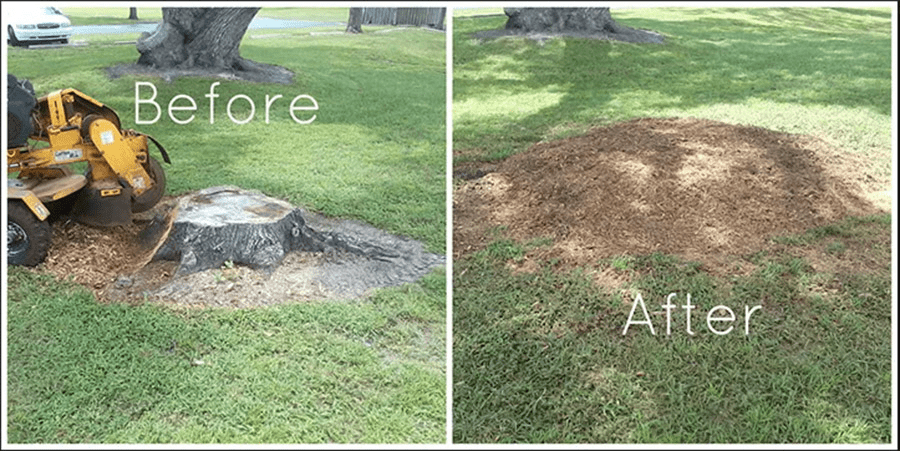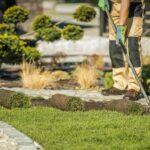Introduction
Stump grinding, an often overlooked aspect of tree removal, plays a crucial role in maintaining the health and aesthetics of outdoor spaces. Beyond its cosmetic benefits, stump grinding has environmental and safety implications that make it a vital part of arboriculture. In this comprehensive guide, we delve into the intricacies of stump grinding, exploring its importance, techniques, and ecological impact.
Why Stump Grinding Matters
1. Aesthetic Enhancement
One of the primary reasons individuals opt for stump grinding is to enhance the visual appeal of their landscapes. Unsightly tree stumps can mar the beauty of a well-maintained garden or outdoor space. Stump grinding offers a solution by completely removing the stump, allowing for a more seamless and aesthetically pleasing landscape.
2. Safety Concerns
Tree stumps left behind after tree removal can pose significant safety hazards. They can be tripping hazards for pedestrians, especially in residential areas or public spaces. Additionally, stumps can damage lawnmowers and other equipment, leading to costly repairs. Stump grinding eliminates these safety concerns, making outdoor spaces safer for both people and property.
3. Preventing Pest Infestations
Tree stumps left in the ground can become breeding grounds for pests and diseases. Termites, beetles, and fungi are just a few of the potential threats that can infest a decaying stump. By grinding the stump, you remove the habitat that attracts these pests, safeguarding the health of nearby trees and plants.
The Stump Grinding Process
1. Assessment and Planning
Before embarking on stump grinding, a thorough assessment of the stump and its surroundings is crucial. Factors such as stump size, root structure, and the proximity to structures or utilities must be considered. This assessment guides the planning process, ensuring the selection of the appropriate grinding equipment and techniques.
2. Grinding Equipment
Stump grinding involves the use of specialized equipment designed to efficiently and safely remove tree stumps. Stump grinders come in various sizes, from small, portable models suitable for residential use to larger, industrial-grade machines for commercial projects. The choice of equipment depends on the size and hardness of the stump.
3. Grinding Techniques
Stump grinding techniques vary based on factors such as stump size, location, and the desired outcome. The basic process involves grinding the stump into wood chips using a rotating cutting disk. The depth of the grind can be adjusted to suit specific needs, from surface-level grinding for planting new vegetation to deeper grinds for complete stump removal.
4. Safety Measures
Safety is paramount in stump grinding. Operators should wear appropriate personal protective equipment, including eye and ear protection. Clear communication and coordination with other individuals in the vicinity are essential to prevent accidents. Additionally, proper training and adherence to safety protocols are crucial for anyone operating stump grinding equipment.
Ecological Impact of Stump Grinding
1. Soil Enrichment
Contrary to the misconception that stump grinding harms the soil, it can actually contribute to soil enrichment. As the stump breaks down into wood chips, it adds organic matter to the soil, improving its structure and fertility. This can be especially beneficial in areas where the soil lacks essential nutrients.
2. Environmental Sustainability
Stump grinding is considered an environmentally sustainable practice compared to alternative methods like stump burning or chemical treatments. Grinding produces minimal disturbance to the surrounding landscape and reduces the carbon footprint associated with other disposal methods. The ground-up wood chips can also be repurposed for mulching, further contributing to sustainable landscaping practices.
3. Restoration of Land
In areas where land needs to be repurposed for new construction or landscaping projects, stump grinding is a key step in land restoration. It allows for the complete removal of tree remnants, facilitating a clean slate for the implementation of new designs and structures.
DIY vs. Professional Stump Grinding
While there are small, portable stump grinders available for DIY enthusiasts, the complexity of the process often warrants professional assistance. Professional stump grinding services bring expertise, specialized equipment, and a commitment to safety that ensures a more efficient and thorough job. Attempting stump grinding without proper knowledge and equipment can lead to accidents, incomplete removal, or damage to surrounding vegetation.
Conclusion
Stump grinding is a multifaceted practice that goes beyond mere cosmetic improvements to outdoor spaces. It addresses safety concerns, prevents pest infestations, and contributes to environmental sustainability. Understanding the importance of proper stump removal, the techniques involved, and the ecological impact allows homeowners and landscapers to make informed decisions about their arboricultural practices. Whether for residential or commercial purposes, professional stump grinding is a crucial step in maintaining safe, aesthetically pleasing, and ecologically responsible outdoor environments.



